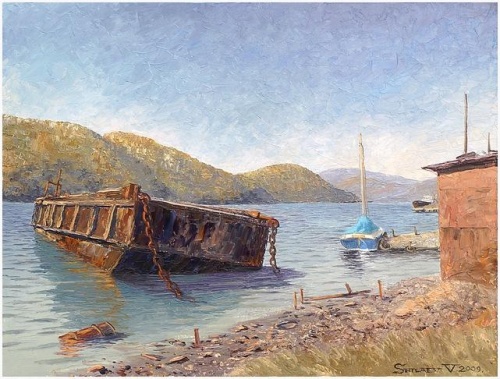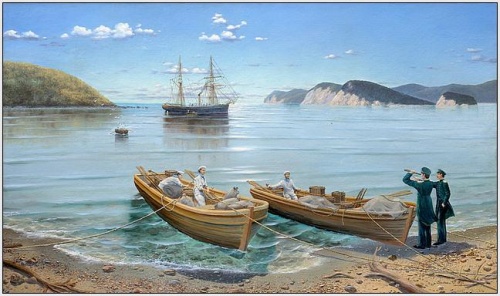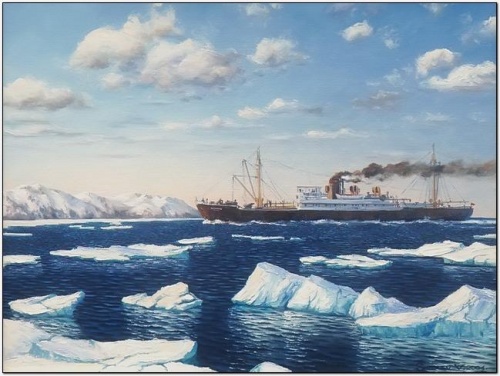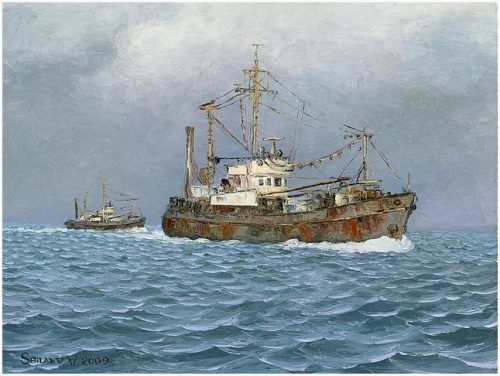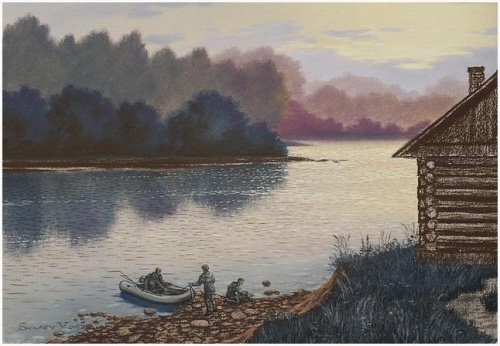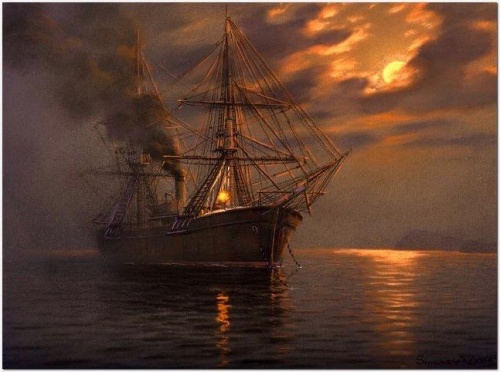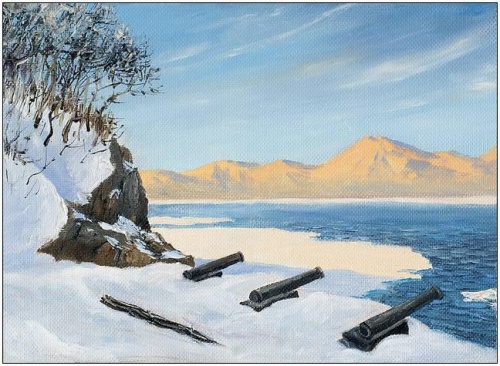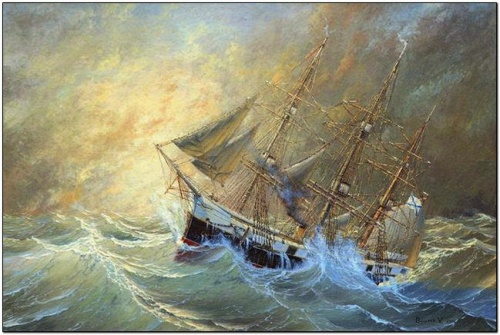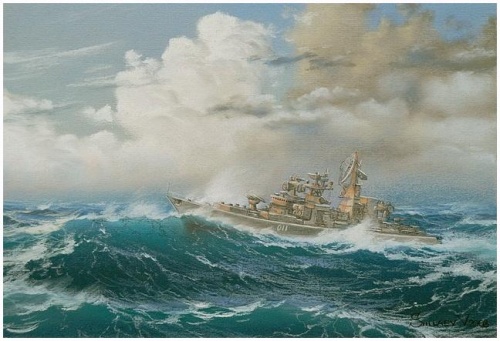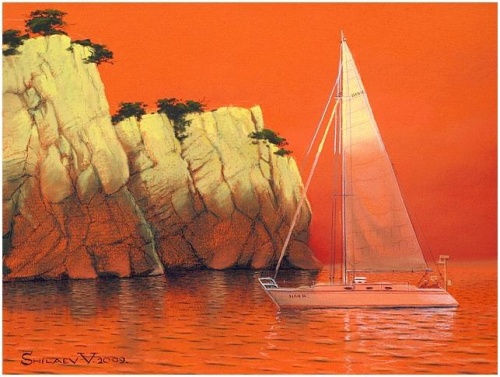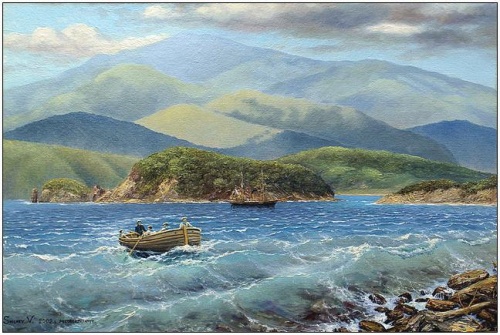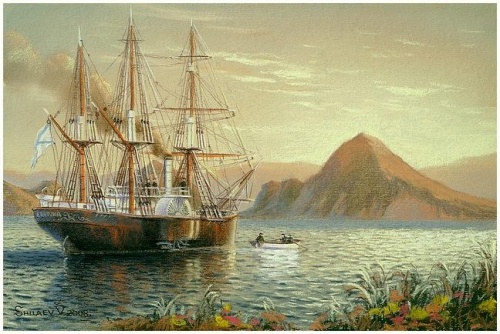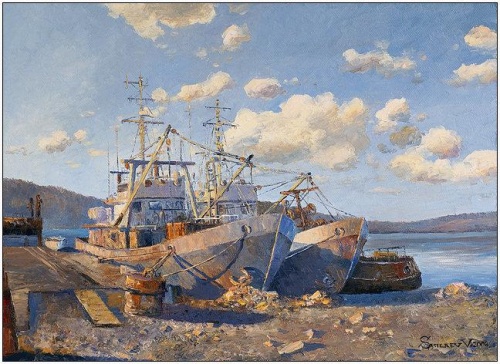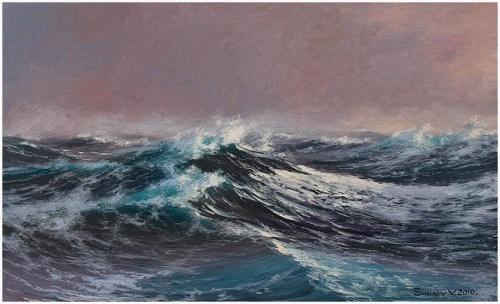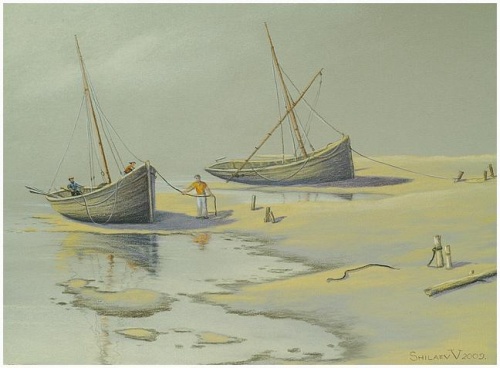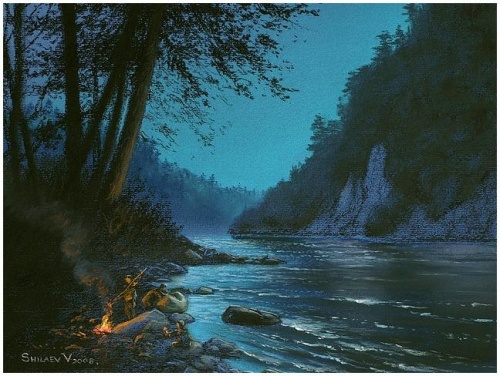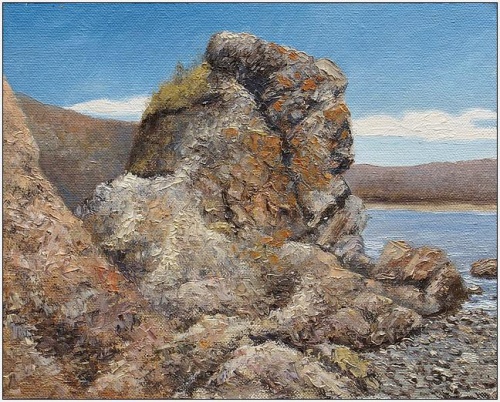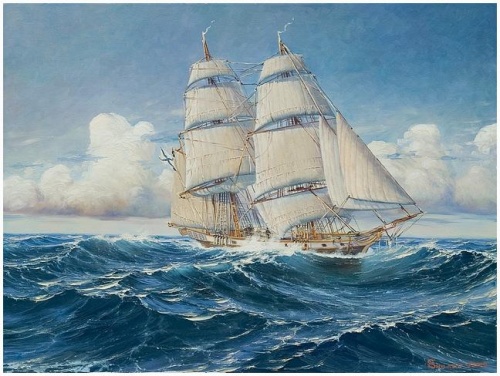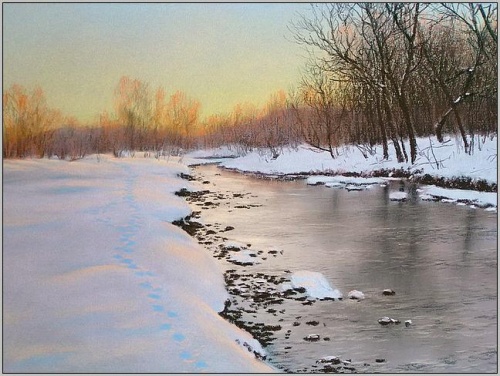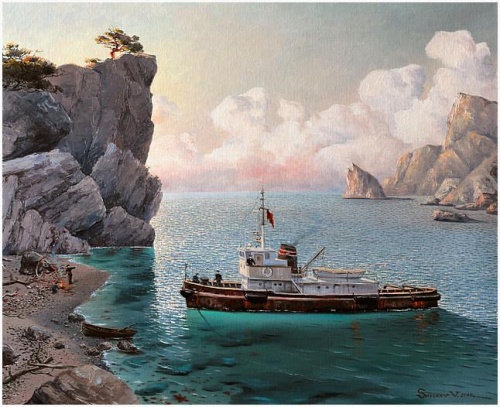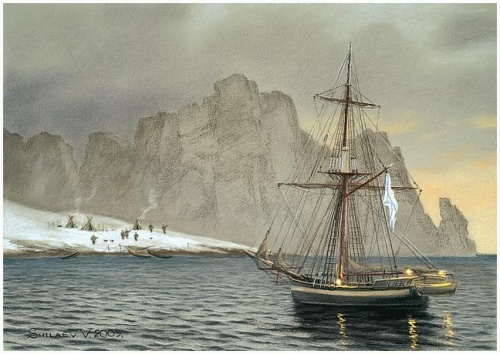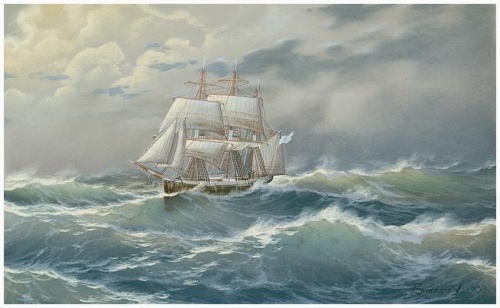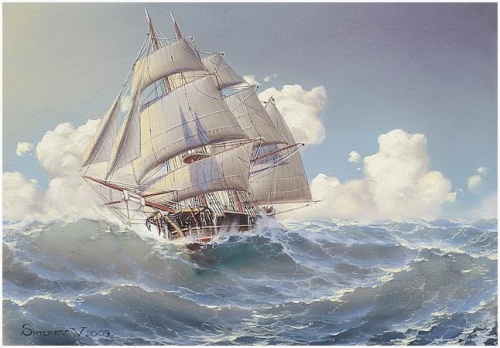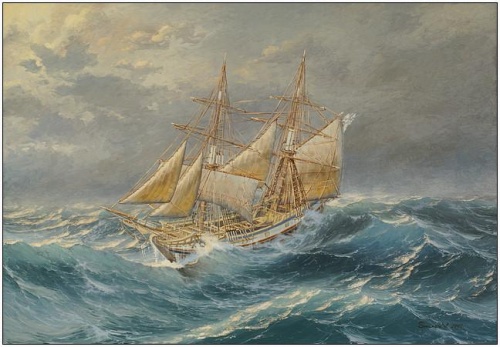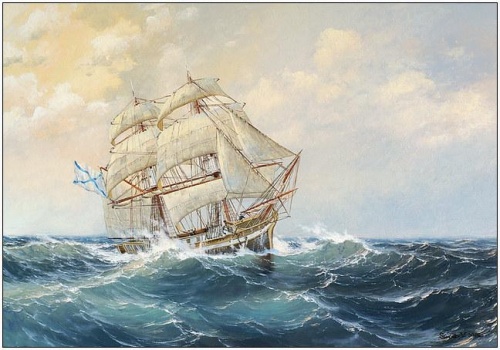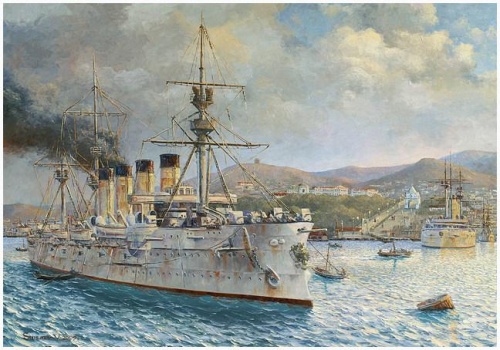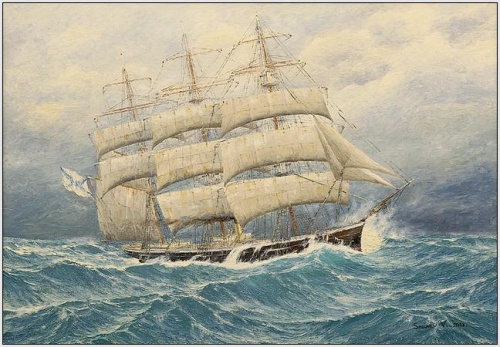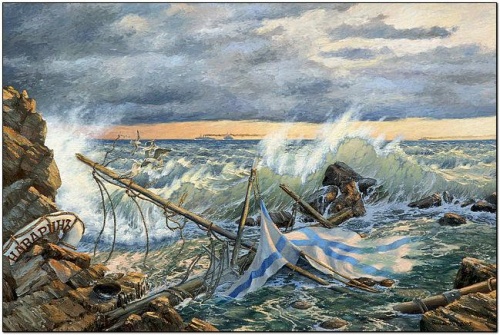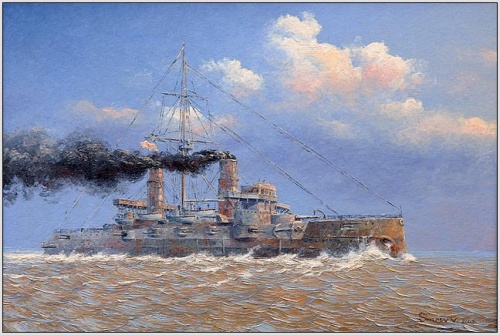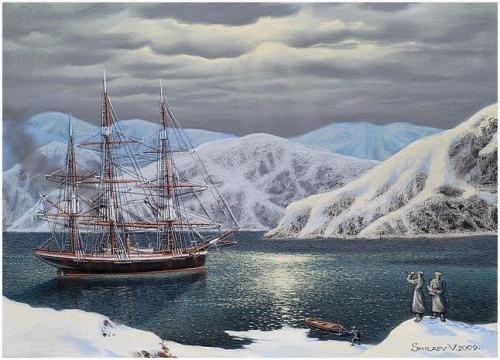Shilyaev Valery (206 works)
Разрешение картинок от 649x329px до 648x580px
The story of the marine painter Valery Shilyaev itself is a romantic story, although at first glance there is nothing unusual in it. Born in the village. Sharanga, Kirov region, in the family of a military man. After serving in the army, he entered the Chelyabinsk Art School in the design department. Upon graduation, he worked as an industrial aesthetics engineer in Cherkassy and Dneprodzerzhinsk. In 1986 he moved to Vladivostok, which in some sense determined his creative biography. It was here that Valery Shilyaev finally developed as a marine painter, completely devoting himself to this genre.
Perhaps, this fidelity to the chosen direction is where romance lies, which manifested itself long before the water element literally became the artist’s element (today he lives in the village of Preobrazhenie, where the sea is two steps away from his workshop or, on the contrary, the workshop is two steps away). steps from the sea). He became a romantic when he was “captured by the sea,” having first seen Aivazovsky’s seascapes in the artist’s museum in Crimea. It was there that he began to write his first marinas. Quite soon, the hobby grew into a real passion: “I collected everything that was written and published about the sea, starting from the 16th century,” admits Valery Shilyaev. “I have a huge collection of books and albums dedicated to marine painting.”
While studying the legacy of the famous Russian marine painter, Valery worked in the storerooms of the Aivazovsky Museum, scrupulously analyzing each work. The theme of water... It is unlikely that a word can convey its boundlessness: the momentary colors of sunset, foggy mornings, calm, foamy surf, stormy rumbles of water hitting rocks, sea battles, a series of ships - today Shilyaev’s creative baggage includes dozens of works. But then you still had to find your own style, transfer your individual sensations of the sea onto the canvas. Aivazovsky once said: “A painter who only copies nature becomes its slave. The movements of living elements are elusive to the brush: painting a lightning gust of wind, a splash of a wave is unthinkable from life. The artist must remember them. The plot of the paintings is formed in my memory, like a poet’s... Having made a sketch on a piece of paper, I begin to work and do not leave the canvas until I express myself on it with a brush.” For one of the most prominent representatives of the Feodosia school, there were no technical difficulties in conveying the physical properties of water - transparency, unruly variability, light reflexes.
